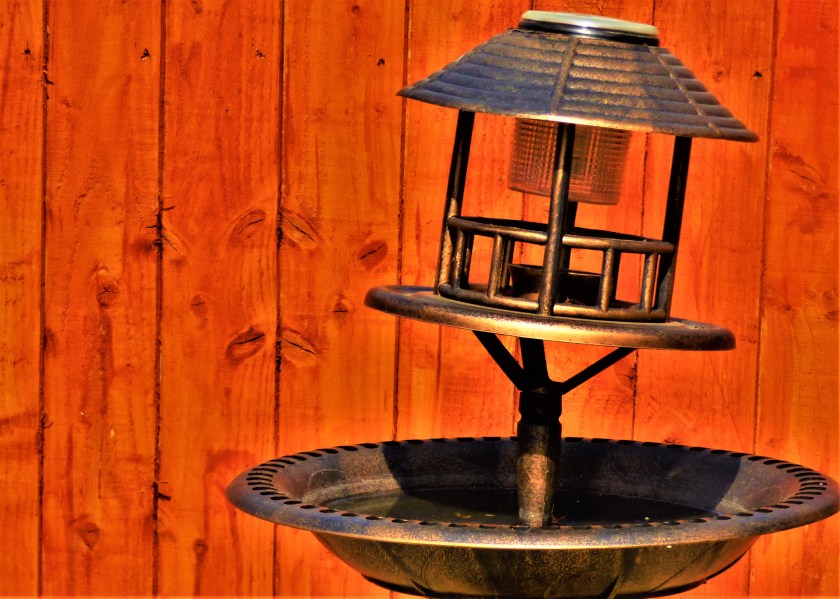INTRODUCTION
Welcome to a variation on the all-time XIs theme (don’t forget that all 18 of my first class county posts can be viewed from here). In this post I create two XIs, one consisting of successful county players who for various reasons never got the call from the England selectors, and the second made up of people whose records suggest that they played more test cricket than they deserved (and in all cases enough matches to form a definite opinion). I examine the merits of my two combinations and assess the likely outcome of the match. I start with…
THE COUNTY STALWARTS
- Alan Jones (Glamorgan) – 36,049 first class runs, 56 centuries and no test caps. He batted left handed and was an occasional off spin bowler.
- John Langridge (Sussex) – 34,378 first class runs including 76 centuries. He was also a good enough fielder to pouch 788 catches in his 574 first class appearances.
- Edgar Oldroyd (Yorkshire) – 15,925 first class runs including 36 centuries. A consistent and reliable no 3 in one of Yorkshire’s many very strong periods. He may well hold the record for time spent padded up ready to bat since the usual opening pair for Yorkshire in his day, Herbert Sutcliffe and Percy Holmes shared no fewer than 74 century opening stands, 69 of them for the county. His grand-daughter Eleanor is now a well a known commentator and broadcaster. He was a right hand bat and an occasional bowler of right arm medium pace and off spin.
- Percy Perrin (Essex) – 29,709 runs in first class cricket, including 66 centuries. An irony of his career is that although he was never picked for England as a player he did become a selector and ultimately chairman of selectors. He was a right hand bat.
- Tony Cottey (Glamorgan) – 14,567 first class runs including 35 centuries. The diminutive Cottey (officially 5’4″) also had the knack of scoring his runs when they were most needed. He was a right handed batter who liked to attack (I saw him make a wonderful century at Swansea which was made to look even better by the way Messrs Hayhurst and Bowler scratched around for Somerset the following day – so torturous was the former’s 96 that I was feeling sufficiently uncharitable as to be relieved when he missed out on his century – justice was done, when Robert Croft spun through the Somerset second innings and Glamorgan took a well earned victory). He also occasionally bowled off breaks.
- Ernie Robson (Somerset) – 12,620 first class runs, 1147 first class wickets taken with his swing bowling. He was 25 when his first class career began in 1895, and 53 when he finished in 1923. He was still troubling opposition batters to the end, and settled one match in that final season by walloping a maximum in the last possible over. Sir Jack Hobbs rated him one of the most difficult bowlers he faced.
- Bill East (Northamptonshire) – 4,012 first class runs and 499 wickets. A right handed middle order batter and medium pace bowler, he was one of the two people chiefly responsible along with George Thompson for his county gaining first class status. He was already 33 years old by the time this happened in 1905, but played on until the outbreak of war in 1914.
- Don Shepherd (Glamorgan) – 2218 wickets at 21.32, more than anyone lese who never played test cricket, 5,696 first class runs. He bowled off cutters rather than true spin.
- +David Hunter (Yorkshire) – more first class dismissals than any other keeper not to gain international recognition.
- Tom Wass (Nottinghamshire) – 1,666 wickets in 312 first class matches at 20.46 each. He could bowl fast medium or leg spin.
- *George Dennett (Gloucestershire) – 2,151 wickets at 19.82 each. He was unlucky to be a contemporary of Rhodes and Blythe (Kent), two of the greatest left arm spinners in history. Against Northamptonshire in 1907 he had one of the most astonishing match performances not to be crowned with victory (see also William Mycroft, in my Derbyshire post). After Gloucestershire had struggled to 60 in their first innings (Jessop 22), Northants were dismissed for 12 (Dennett 8-9, Jessop 2-3), Gloucestershire then scored 88 second time around (Jessop 24) and Northamptonshire fared slightly better in their second dig, reaching 40-7 (Dennett 7-12), and the general reckoning is that had there been time for even one more Dennett over the game would have been done, but Northants were saved by rain, and Dennett, with 15-21 in the match, had to settle for a draw. Bizarrely, given the combined Northants effort of 52-17, the only player in the game to bag ’em was Dennett himself.
This team has a very solid top five, two all rounders at six and seven, three specialist bowlers and a superb wicket keeper. Now it is time to move on to…
TRIED AND UNTRUSTED
- Keaton Jennings (Durham and Lancashire) – even a fine tour of Sri Lanka, for which many would not have picked him, only boosted his average to 25.19 from 17 test matches. The left hander was named in the tour party for Sri Lanka this year before coronavirus caused that tour to be put on the back burner. Presumably when test cricket resumes England’s top three will be Burns, Sibley and Crawley, so it seems reasonable to presume that he has played his last game as an England opener.
- Mark Stoneman (Durham and Surrey) – this may get me excommunicated in the northeast, but while entitled to your own opinions, you do not get to pick your own facts, and the harsh facts here are that having had 11 test matches Stoneman averages 27.68, with a best of 60 (having been given three lives along the way), not the stuff of which test openers are made.
- Joe Denly (Kent) – some will see this inclusion as harsh, even draconian, and I freely concede that Denly has done a useful job as a stopgap no 3 in a difficult period. However, once again, you do not get to pick your own facts, and Denly averages precisely 30 from his 14 test match appearances (26 innings), which is not the stuff of which proper test match no 3s are made. The England selectors snookered themselves by failing to prepare for Cook’s retirement, an eventuality which Polyphemus could have seen coming even after Odysseus had finished with him and persisting with Jennings for far too long after he had been exposed as not being of test class, and were also handicapped by a major falling away in Bairstow’s red ball contribution, but with Burns, Sibley and Crawley now established it seems that Denly can safely be regarded as a former test cricketer.
- Mark Ramprakash (Middlesex, Surrey) – 52 test match appearances, a measly two centuries and an average of 27.32 constitute a massive underachievement by the last cricketer to reach the career milestone of 100 first class hundreds. Many found the fact of his failure at the highest level hard to accept, and as late as 2009 there were voices calling for his selection when England needed a new batter for the final match of that year’s Ashes series at The Oval. Fortunately, 21st century England selections have in general been more sensible than those of the 1980s and 1990s (not a high bar!) and quite correctly Jonathan Trott as ‘next cab in the rank’ got the nod.
- Graham Roope (Surrey) – an average of 30.71 from his 21 tests (compare with fellow 1970s picks Steele – average 42.06 from eight test matches – and Radley – avergae 48.10 from eight test matches – who both played fewer games), highest score 77. On the credit side of the ledger that 77 did come against the Aussies, as England made 538 in their second innings at The Oval in 1975 to save the game.
- Geoff Miller (Derbyshire, Essex) – actually one place lower than he often batted for England. 34 test matches yielded him 1,213 runs at 25.80 (HS 98 not out), and 60 wickets at 30.98. The bowling average sounds almost respectable, but there is a strong “anti-mitigating” factor – that wicket taking rate of less than two per match, which simply does not permit him to be regarded as a front line bowler.
- David Capel (Northamptonshire) – One of the many who suffered from attempts to fill a Botham shaped hole that was opening in England’s ranks during the second half of the 1980s. 15 test matches brought him 374 runs at 15.58 and 21 wickets at 50.66.
- +Geraint Jones (Kent) – yes, he played his part in the 2005 Ashes triumph, but his less than polished wicket keeping was excused on grounds of what he could do with the bat, and average of 23.91 from 34 test matches is nothing special. He has a place in the ‘exotic birthplaces’ squad, having been born in Papua New Guinea.
- *Derek Pringle (Essex) – to me, and I suspect many other English cricket followers of my generation, this man is the living embodiment of the antithesis of an all rounder. I was actually surprised to note that his 30 test appearances yielded a batting average of 15.10 and a bowling average of 35.97 – I expected even worse. However, when I first saw him play in 1986 he came in at no 6, and was being touted as an all rounder. His bowling is also subject to the ‘anti-mitigation factor’ that he only took 70 wickets in those 30 test matches – 2.3 per match, approximately half the wicket taking rate required from a front line bowler. Additionally he was not the most mobile of fielders and had a dreadful throw (in fact usually bowling the ball in rather than producing a proper throw). The award of the captaincy to him reflects his status as to me the ultimate in being “tried and not trusted”.
- Ian Salisbury (Sussex, Surrey) – leg spinner who bowled at least as many bad ‘uns as he did good ‘uns. His 15 test appearances netted him 20 wickets at 76.95, and at a time when test scoring rates were generally lower than they are now he went at 3.70 an over. I considered the left arm slow bowler (not spinner – if he ever got one to turn I did not see it) Richard Illingworth (Worcestershire), but the latter had the sole merit of accuracy, which means that while not generally penetrative his bowling average remained at least semi-respectable.
- Peter Martin (Lancashire) – a classic example of a type of player I saw far too much of in the 1980s and 1990s, the guy who experiences some success bowling a bit quicker than medium for his county but looks innocuous at a higher level. A bowling average of 34.11 from eight test matches may not sound terrible, but the ‘anti-mitigation factor’ comes into play – he only took 17 wickets, just over two per game in those matches. Had he had 34 wickets at 34 I would have said that at least he demonstrated an ability to take wickets, and maybe the average would come down in future, but with 17 in eight matches there was not even that straw to grasp at.
This team has a top five who can confidently be expected not to score heavily enough, three varying types of ‘anti-all rounder’, an unreliable wicket keeper and two specialist bowlers neither of whom are likely to take wickets and one of whom will very probably get smacked around – quite like a late 1980s and 1990s England team in fact! I also reckon that skipper Pringle will make plenty of wrong decisions.
THE VERDICT
Our team of good county players who never got the test nod looks a well balanced combination, with just about every base covered. The ‘tried and untrusted’ team looks a rabble. I would expect the team of non-internationals to win by a huge margin – the ‘contest’ would probably make the 2006-7 Ashes look like a nailbiter!
Remember that this exercise is just a bit of fun, and if disputing some of my picks remember that while you are entitled to your own opinions, you are not entitled to your own facts.
PHOTOGRAPHS
We have completed our journey through the “County Stalwart” and “Tried and Untrusted” XIs, and all that is left for me is to supply my usual sign off (and field the comments when they come)…



















3 thoughts on “All Time XIs – County Stalwarts vs Tried & Untrusted”